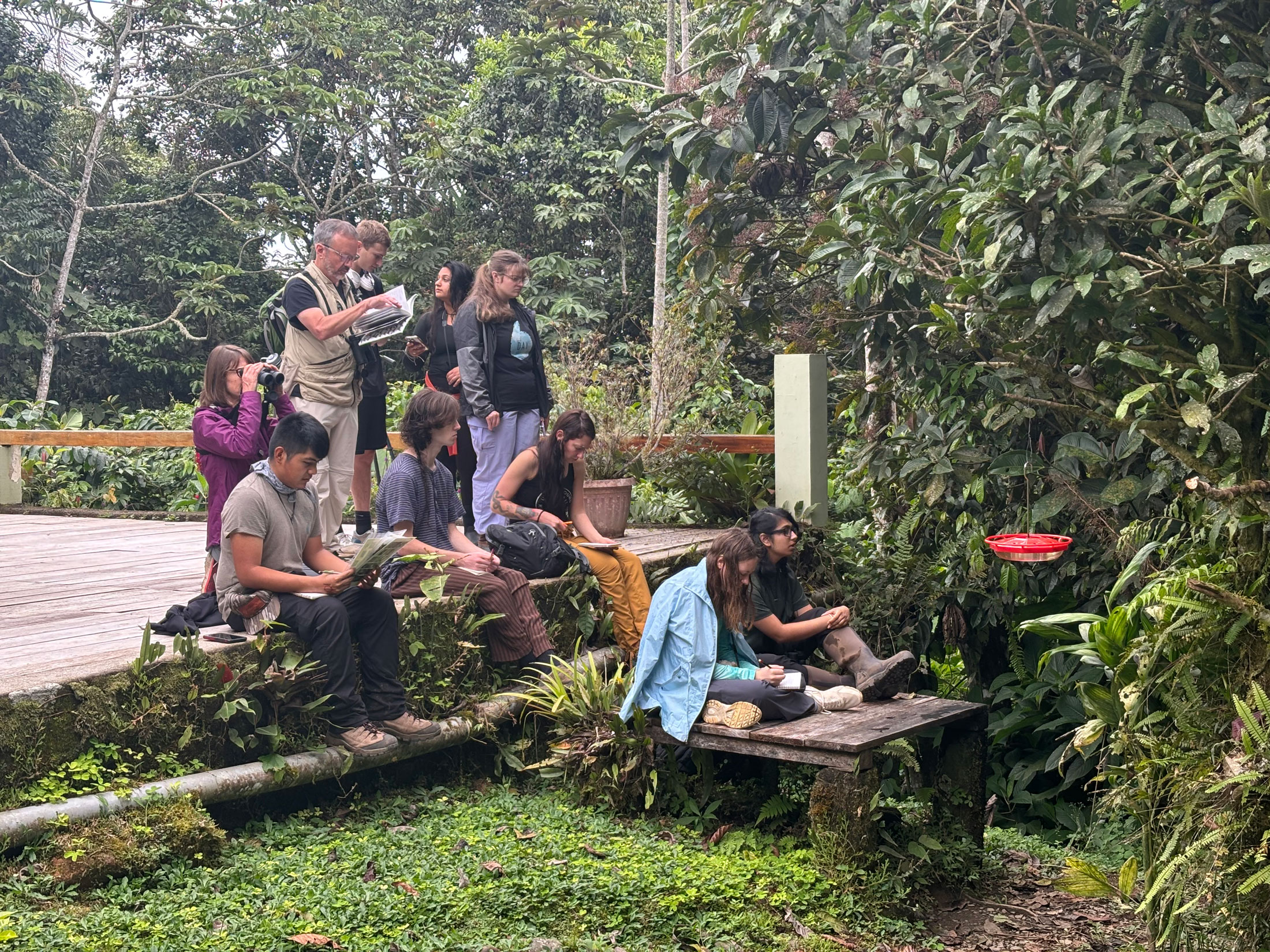
Birders and bird guides refer to “our birds,” meaning the birds like Carolina chickadee, tufted titmouse, and northern cardinal that we see in our backyards—birds that “know us” and expect us to feed them or provide habitat for their nesting. We also see our resident birds while out on our favorite hiking trails or driving along the roads through Great Smoky Mountains National Park.
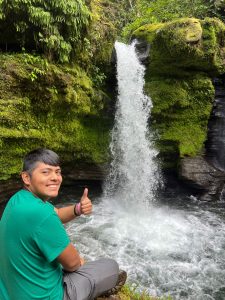
But we don’t always see the same birds in these places. Sometimes there are other surprise visitors to our yards, trails, and roadsides.
Who are these guests whose unusual calls and colors grab our attention? They are “our” Neotropical migrant birds. Long-distance travelers like scarlet tanager, rose-breasted grosbeak, ruby-throated hummingbird, and the North American wood warblers—the migratory jewels of the forest—are beloved by residents and visitors to the Smokies alike.
“They are technically Nearctic-Neotropical migrants, which specifically refers to ‘our’ birds that breed here—or migrate through the Smokies on their way farther north—during our summer months,” said Travis Knowles. “They then migrate south to the Caribbean, Central, and/or South America during our winter.”
Knowles is biology professor at Francis Marion University (FMU) near Florence, South Carolina. He also manages Wildsumaco Biological Station in the Ecuadorian Andes, a veritable birding paradise where he and fellow instructor Dr. Jim Costa of Western Carolina University (WCU) hosted a class of ten college students this past July.
The trip to Ecuador was the first time Justin V. Bartolon of Latta, South Carolina, had ever been on a plane. A junior biology major at FMU, Justin didn’t know how transformative the course and trip would be.
“When we arrived at Wildsumaco, I discovered bird watching, and that has changed me forever,” he said. “Spotting my entry bird, the channel-billed toucan, made me feel alive again. I never would’ve guessed how exciting it would be to find new birds every day.”
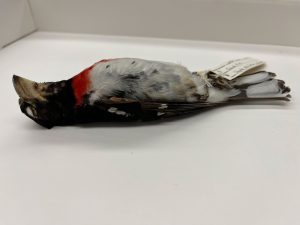
Knowles, who started birding at age eight upon seeing his first evening grosbeak, relived that initial excitement vicariously by observing his student’s instantaneous fanaticism. The moment a lecture ended, Justin would rush out of the biological station, seeking a trogon, tanager, or tropical kingbird on which to focus the spotting scope.
Costa and Knowles call their course Comparative Temperate–Tropical Ecology and Biogeography, and this was the third time they’d offered it. Starting at WCU’s Highlands Biological Station, which Costa directs, the students ventured to several sites in Great Smoky Mountains National Park including Twin Creeks Science and Education Center where they saw preserved avian specimens—some of which had flown thousands of miles in their lifetimes.
“I have seen scarlet and summer tanagers, cerulean warblers, Swainson’s thrushes, mourning warbler, and other species at WildSumaco in December and January,” Knowles said.
To complete their life cycles, these Nearctic-Neotropical migrants need breeding habitat in North America, wintering habitat in the Neotropics, and migratory (or ‘stopover’) habitat in between for food and refueling energy reserves.
“Disruptions to any of that habitat diminishes populations,” he said. “If we don’t care about wintering and stopover habitats for these Smokies treasures, we can lose them.”
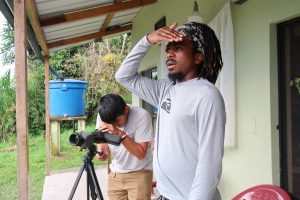
Some other Neotropical migrants that can be found both in the Smokies and Ecuador include broad-winged hawk, eastern wood-pewee, red-eyed vireo, barn swallow, American redstart, and warblers such as black-and-white, Blackburnian, blackpoll, Canada, and Tennessee warbler. Knowles said some familiar and beloved birds of the Smokies, like the wood thrush with its beautiful flute-like song, don’t overwinter in Ecuador but still need wintering habitat in other parts of the Neotropics.
“Many of the same threats that impact biodiversity in the tropical Andes biodiversity hotspot also threaten the Southern Appalachian biodiversity hotspot,” Knowles said. “They include deforestation, the decline of insects as sustenance for migratory birds due to overuse of pesticides and fertilizers, light pollution, and many other human impacts such as road building—which fragments habitats and disrupts species movements—and of course climate change.”
Justin said bird watching has increased his love for animals everywhere and will help him discern his future career path.
“As complex as rainforests can be in terms of layers and biodiversity,” he said, “that doesn’t mean there isn’t any diversity in the Carolinas and in the Great Smoky Mountains. Now, every time that I see a bird for the first time or for the millionth time, it’s like looking at art—nature’s living art.”
On all four flights of the trip, Justin was coincidentally seated next to another first-time flyer, Aislinn-Anne Brown of Selma, North Carolina. Both admitted to nervousness before the plane ride, but now both want to fly again to experience more of the world’s biodiversity.
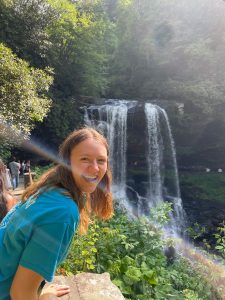
A senior biology student of Costa’s concentrating on ecology and evolution at WCU, Aislinn-Anne said the course gave her “an appreciation for bird identification” as well as for “how quickly habitats can change when you take elevation into account.” She was delighted to find two dozen hummingbird species in the cloud forest at elevation 9,000 feet, then discover a whole different assembly of hummers at an altitude of 4,500 feet in the shadow of Sumaco Volcano. These tiny high-strung birds feed on flowering plants that are specific to the different elevations.
“In Ecuador, I learned to be constantly observant and constantly amazed by my surroundings,” she said. “I would see a bird and immediately pull out my binoculars to try and identify it. I looked at all the different things growing on the trees and the ground.”
Yet, once she returned to the routines of school and home in Western North Carolina, Aislinn-Anne had to remind herself to pay attention to the spectacular backdrop of clouds and mountains, plants and birds—the reasons we all love living here.
“Back here at home, everything is so familiar that I don’t even notice it,” she said. “My time in Ecuador has reminded me to actually process what I see around me and to be amazed by it, rather than ignoring it.”
Aislinn-Anne learned from the trip to Ecuador how to better appreciate her home environment.
“Our mountains may not be as large as the Andes, but they’re so much older,” she said. “Every time I’ve seen a bird since getting back, I’ve found myself reaching for binoculars to see if I can identify it. I’ve regained my wonder for the world around me.”
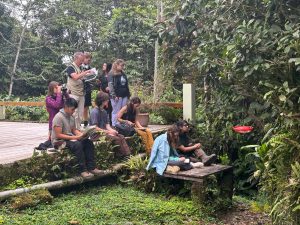
It’s easy to become so accustomed to “our” species in Southern Appalachia that we might be tempted to take them for granted. It’s hard for us to get as excited about seeing a northern cardinal in our backyard as we might be to spot a cock-of-the-rock in a Neotropical rain forest. But by the same token, there can be a tendency to see our own local flora and fauna as superior to that of other biogeographical areas.
“We often tend to become prideful about ‘our’ biodiversity, meaning the species we routinely (or occasionally) encounter in our own ecoregion. That’s only natural,” Knowles said. But he points out that whatever diminishes one ecological system diminishes another, perhaps several others.
“Coming to see global biodiversity as a collective heritage seems fundamental to generating an enduring and effective conservation ethic,” he said. “The biodiversity of the Neotropics belongs, in a heritage sense, to people who live near, or travel to, the Smokies, just as the Smokies’ biodiversity belongs to the people of Ecuador.”
Comparative Temperate–Tropical Ecology and Biogeography will be offered again in 2026 and is open to students from any university. Highlands Biological Station of Western Carolina University and Wildsumaco Biological Station of Francis Marion University are committed to the study and protection of biodiversity as well as research and education for students, faculty, and citizens of the United States, Ecuador, and the global community. To learn more or discuss opportunities to visit these stations, contact Jim Costa at costa@wcu.edu and Travis Knowles at tknowles@fmarion.edu.
Subscribe to get the latest posts sent to your email.
The Great Smokies Welcome Center is located on U.S. 321 in Townsend, TN, 2 miles from the west entrance to Great Smoky Mountains National Park. Visitors can get information about things to see and do in and around the national park and shop from a wide selection of books, gifts, and other Smokies merchandise. Daily, weekly, and annual parking tags for the national park are also available.